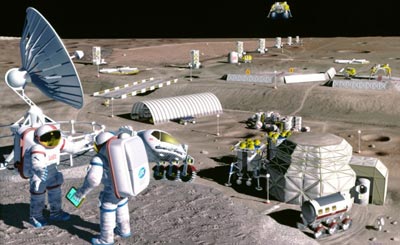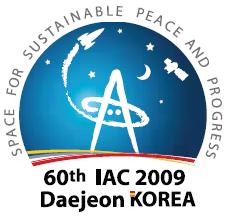The first experiment in the production of oxygen from bacteria in environments simulating the moon and Mars was successfully conducted in Germany.

The first experiment in the production of oxygen from bacteria in environments simulating the moon and Mars was successfully conducted in Germany. The idea is to utilize certain types of bacteria for the production of oxygen to sustain astronauts on long space missions, as well as to support manned activities on the moon and Mars.
As part of the research program of the German OHB company, the suitability of oxygen-producing bacteria was tested in a facility that simulates lunar soil (simulated lunar soil developed by NASA for research purposes, type JSC-1), as well as in a facility that simulates the Martian environment.
It turns out that there are various problems for the bacteria to hold onto the nanometer grains of the lunar soil, but genetically engineered bacteria are used that are able to create a better connection to the pointed and jagged grains of the lunar regolith.
As part of the research, initial attempts were also made to create an image of the Martian atmosphere and adapt bacteria to the conditions prevailing on Mars - in terms of the composition of the atmosphere and soil, air pressure and radiation.
First calculations show that a facility with a volume of a few cubic meters will be able to support a team of 3-5 astronauts in terms of oxygen production. The research team intends to examine the feasibility of hydrogen production using bacteria, for use as rocket fuel for spaceships as well as for the production of water, with the oxygen produced in another facility.

A separate and detailed record will be published on the Hedaan website at a later date.

19 תגובות
I too would love to know how oxygen is supplied to the International Space Station
Indeed the idea is not new at all, the innovation here is in the applied research which looks very promising.
The idea of producing oxygen using single cells is so old that it was already "used" to "ground" the earth billions of years ago.
Of course, this is an example of an idea that its obsolescence does not make it bad - it only detracts from its originality.
The truth is that I also looked for the post that Ami referred to and I could not find it.
Nostradamus… 2012…. Well, well... I renounce any connection to such things.
Producing oxygen locally on celestial bodies is a supreme goal for humanity, which will of course be forced to leave its beloved star in one way or another over time (our sun - the sole source of life - is going to betray us and swell into a red giant in a few years). A pilot on the moon or on Mars and drawing lessons in everything related to colonization are an essential and first interest in socio-astronomical research (does anyone know such a concept or have I just invented a new discipline?)
Greetings friends,
Ami Bachar
Ami, I also predicted something similar to this.
I am sure that my generation will no longer see these changes and I am also not sure that the country will survive another 200 years.
I go with Nostradamus and said in 2012 he did not predict that there would be an end to everything but the bitter end would begin this year.
And what is certain is that man is the main cause of the destruction of the earth and may even destroy Mars in the future because if there is life there the bacteria will kill them.
No, if you bring oxygen to the moon, it will be disposable. If you bring soil, you can use it endlessly..
Even if there is primitive life on Mars
The star bloom will not cause them to evaporate.
So I see the search for life on Mars as a waste of money and time.
If computer viruses managed to infiltrate the spacecraft computers
It can be said that Mars and the Moon have long been contaminated with real viruses and germs.
It will be even more fascinating to see such bacteria evolving in an extraterrestrial environment.
Oxygen is a very flammable substance, you need a bacterium or several bacteria to give a gas composition that characterizes the Earth's atmosphere, that is:
The atmosphere today consists of the following gases[1]:
78.084% nitrogen
20.948% oxygen
0.934% argon
0.0314% carbon dioxide
Ziv, as already said, it's much easier to take oxygen than soil... so what's the point of taking soil?
The idea is to produce oxygen and hydrogen on the moon.
You can bring some soil from the earth so that the bacteria can hold on to it.
Tal Thanks for the answer, how long is each oxygen tank enough for? After all, the place is small and inhabited by several people...
Roy, oxygen is sent to the space station via the space shuttle/Soyuz/ATV/HTV.
As for your response 5, what does "carry a few tons of moon soil" mean? Who talked about it? Please explain and also what is meant by "next to the stars".
From what I understand, the oxygen was not formed from an ion, but from the soil of the moon, or the soil of the star.
Regarding its use as critical fuel:
In my opinion, it is easier in terms of weight and technology to compress oxygen than to carry several tons of lunar soil.
Unless the idea is to extract the oxygen from nearby stars. In that case, it will take time for the bacteria to get used to the star's conditions and start producing oxygen
By the way, how do you solve the problem of long stay missions on the International Space Station? After all, it is impossible for them to carry with them oxygen tanks that are enough for a year...
Ami, the very idea of "landing Mars" is not new -
http://www.ynet.co.il/articles/0,7340,L-2918936,00.html
http://he.wikipedia.org/wiki/%D7%94%D7%90%D7%A8%D7%A6%D7%94
http://lib.cet.ac.il/pages/item.asp?item=10349
Could you please provide a link to the post you were talking about?
ha ha!!! When I wrote about it in one of my more bizarre comments, the talkbackists responded with disdain and there was even someone who asked if I forgot to take the pills. So no, I didn't forget the pills. Seeding bacteria on future planets is the most effective and cheapest way to create suitable conditions for settlement, even if the conditions do not completely allow life as it is but reduce the expenditure and energy investment in the establishment of life-supporting technologies.
Let me just warn and insist that under no circumstances should this be done without very thoroughly (!!!) investigating the life that already exists, if it exists, on the moon or the other planets. The most interesting and important thing is finding life and studying it. If all the aspects of the study are not available or have been exhausted - then you can start thinking about blooming the wilderness as the old man said.
I predict we will find life on Mars. If I am wrong and life is not found, I predict that in two hundred years the Red Planet will be a green, monocultural planet littered with genetically engineered cyanobacteria originating from the Earth's South Pole.
With the blessing of fools and soothsayers,
Ami Bachar
sounds amazing! I would love to hear more details on the subject!!
Fascinating research.